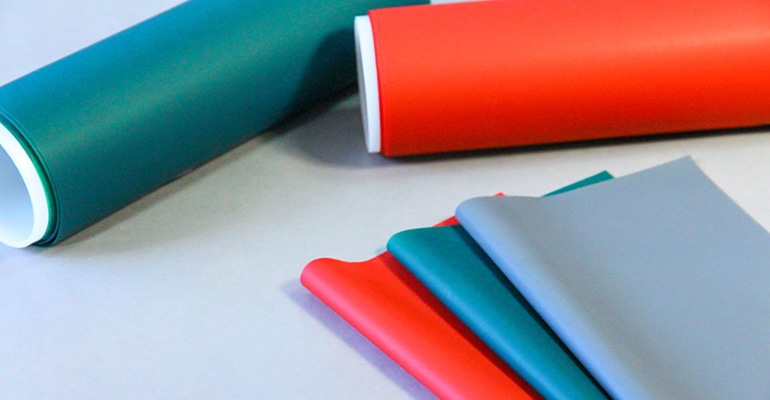An Easier, More Cost-Effective Way to Bond Cured Silicone to Plastics
By chemically bonding silicone sheet with an ultra-thin polyurethane-based modified layer, Compo-SiL technology from General Silicones boosts the level of surface energy and improves adhesion.
November 30, 2020

The low surface energy of cured silicone makes adhesion difficult, notably when it is applied to plastics. General Silicones has developed a technology that allows manufacturers to easily cut and apply silicone sheets to products using a thin polyurethane-based layer. The patented Compo-SiL technology reportedly allows the efficient processing and durable bonding of cured silicone in mass production quantities.
|
A polyurethane-based layer that boosts silicone's surface energy is at the heart of Compo-SiL technology. |
Silicone is a bio-friendly, sustainable material of choice for many large-volume applications in the healthcare, electronics, automotive, aerospace, industrial assembly, building, textile, and other sectors, notes Taiwan-based General Silicones. However, the low 24 mN/m surface energy of cured silicone rubber renders adhesion difficult. By chemically bonding the silicone sheets with an ultra-thin polyurethane-based modified layer, General Silicone’s Compo-SiL technology boosts the level of surface energy to ~38mN/m.
Conventional adhesive technologies and primers used to bond low-surface-energy silicone with other surfaces may encounter difficulties controlling reaction kinetics and chemical compositions, according to General Silicones. Other surface pretreatment techniques — corona, plasma, and flame methods, for example — can enhance the surface energy of silicone, but they may adversely affect its durability. The techniques also are complex, costly, and may raise environmental or safety concerns, says the company.
General Silicones has conducted internal peel-resistance tests to evaluate the bonding strength of silicone with the PU modified layer as well as other adhesives. Results are available upon request.
General Silicones can customize silicone properties to suit various customer requirements, including transparency, color, hardness, thickness, tensile and tear strength, and elongation. First introduced in May 2020, Compo-SiL is available globally.
About the Author(s)
You May Also Like





